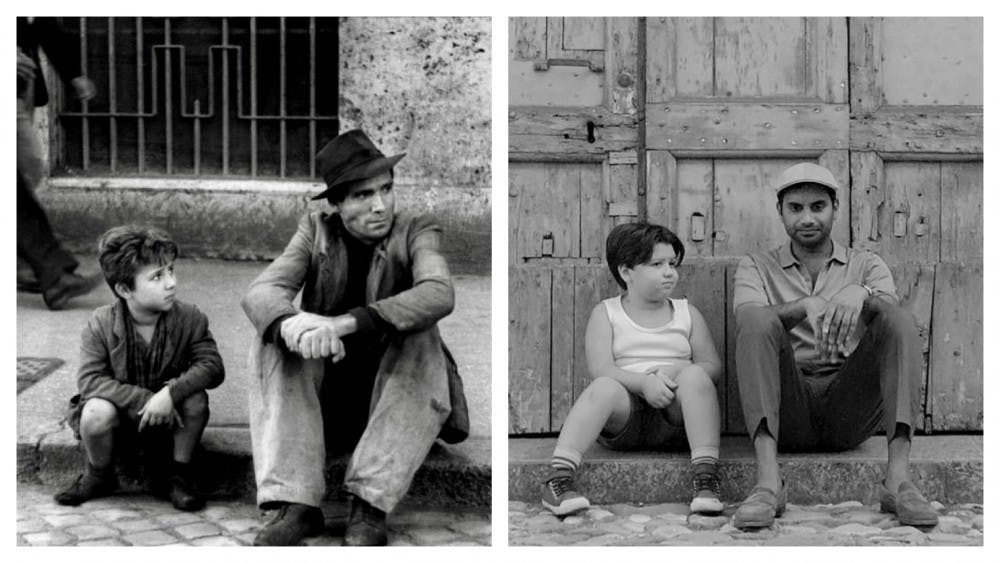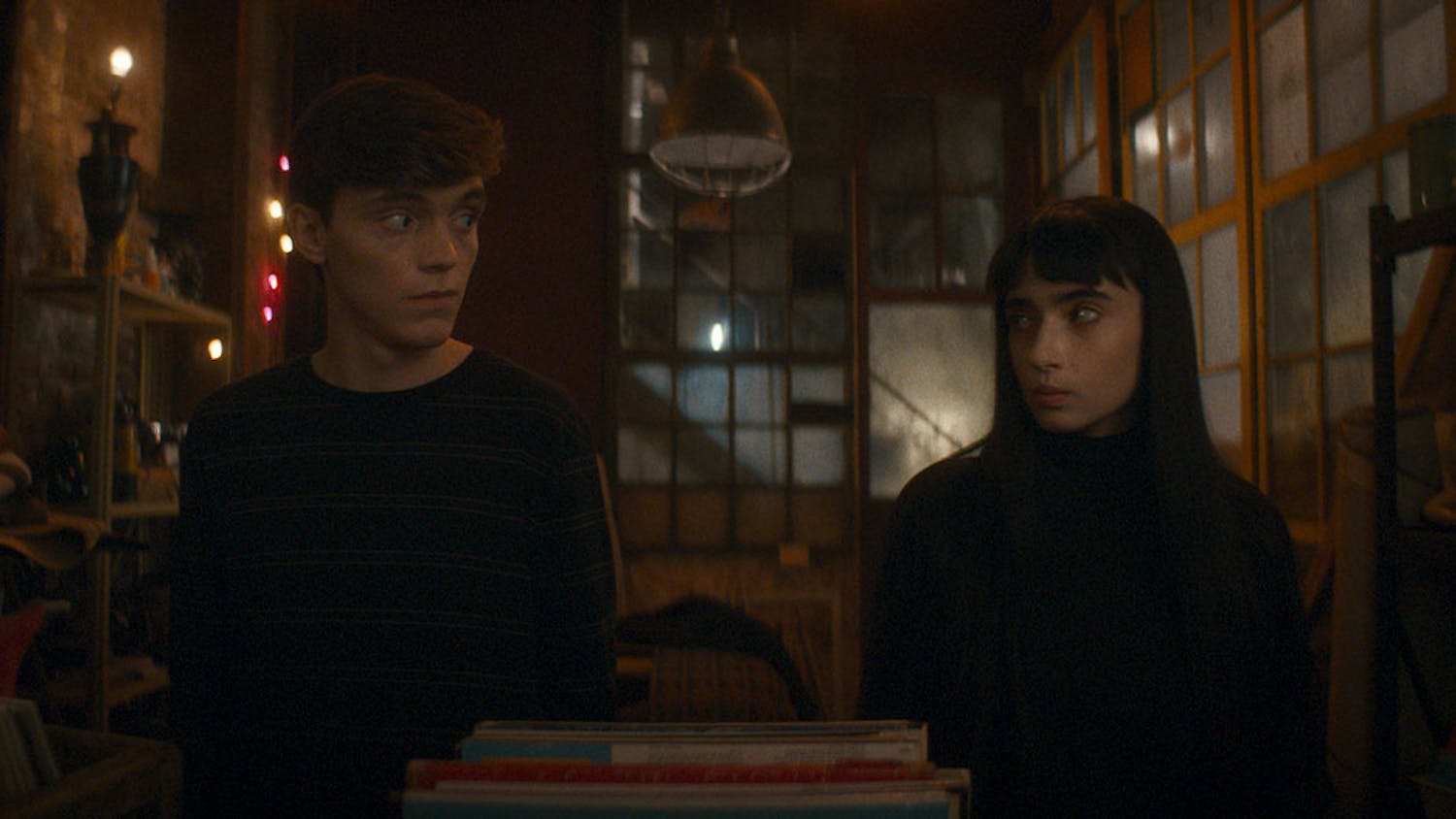It’s been roughly three months since I arrived in Italy, a part of the world often broken down into a few romanticized generalizations invoking adorations of pastas, wines, cheeses and pizzas. The pattern of food association with the culture is, while somewhat accurate, casting a shadow on other elements of Italian society that may be overlooked outside of their niche communities. This, too, was my experience approaching the neorealism film movement of the 20th century.
The Italian film industry began with a style reminiscent of D.W. Griffith’s filmography: Silent features of grandeur, set in some fantastical or quasi-historical tale (known as the “peplum”) with scales of production unprecedented in the creative process. Even today, its vestigial remains are replaced with the advent of CGI, an ongoing controversy of ingenuity among millions of moviegoers.
Moving away from the wood-and-plaster recreations of Ancient Rome and exotic lands, the industry thrived through innovations employed by directors of the 20th century. One such example was Giovanni Pastrone — director of the peplum film “Cabiria” — who recorded single scenes with multiple cameras, establishing an efficient standard for the film medium permanently.
"Giovanni Pastrone recorded single scenes with multiple cameras, establishing an efficient standard for the film medium permanently."
Then, the melodrama was birthed. Nicknamed “telefoni bianchi,” or white telephones reflecting the opulence of the upper class, they would fall prey to the criticisms of writers from the Italian film journal, “Cinema.” The publication was under the direction of Vittorio Mussolini, son of the famed fascist. Where propaganda could not be ridiculed, these extravagant exaggerations of daily life were met with vicious analysis. Unironically, critics of the genre would include the pivotal forces of Italian cinema, including Michelangelo Antonioni, Vittorio De Sica and Roberto Rossellini. After the fall of fascism, these forerunners would create hyper-mundane, almost too realistic portrayals of the common Italian, as seen in some of the most famous films to come from Europe (“Bicycle Thieves,” “Umberto D.” and “Rome, Open City.”)
And I hated them.
It’s one thing to drone on, seemingly infinitely, about the history of film as though it were an assignment, but even now — three months after my first viewing — I’m searching for an answer as to what signaled the shift in my approach to these films from ones of vacant insipidness to feeling the neorealist directors were not only ahead of their time, but belonged to it.
In its most basic form, a neorealist film can be defined by an intricate approach to authenticity and placement within the social context of some period — usually the “present.” The idea comes from Andre Bazin, a French film theorist (who would also famously establish Cahiers du Cinema, the French equivalent of Mussolini’s journal) preoccupied with the camera lens as a mirror reflective of our reality, not simply a window with which to create new realities.
Because of this dependency on realistic depictions of life, your average neorealist film will feature entire scenes played out in real time, sparing “unnecessary” instances of a cut. After all, isn’t life performed continuously — without interruption?
"Your average neorealist film will feature entire scenes played out in real time, sparing 'unnecessary' instances of a cut."
It’s interesting to find that these fluid scenes don’t even have to contribute anything to the main narrative or push characterization further into itself. They could simply be the process of men arriving for work in the morning (“Bicycle Thieves”) or a woman preparing coffee and lighting the gas-powered stove before sweeping the kitchen floor (“Umberto D.”) Yet, in some alien, meta-reflexive way, these scenes are the narrative. There may be a storyline with characters, obstacles and resolution to follow, but they comprise only a small segment of the world within them — one teeming with life. This simple ideology would become the foundation of an entire film movement.
As for the social context, a good 90 percent of neorealist films are set in 20th century Italy. Because of World War II’s colossal impact on Italian politics with the downfall of fascism, these movies are placed either directly into wartime (“Paisan,”) directly afterward (“Germany, Year Zero,”) or somewhere in the interstice between impoverished, postwar Italy and the commercialization of the country in the mid-1960s. Not every film was reliant on World War II as a foundational plot point, though. Entries such as “Bitter Rice” or “Mamma Roma” were, while still part of a world largely affected by the war, dealing with the continuing issues of class struggle, tilting on the edge of a bright future or financial destitution. These social hardships ran rampant in Italian society: To see it reflected on the silver screen instilled familiarity and communal empathy between the characters onscreen and the audience who often saw themselves within these stories.
For the longest time, the barrier that blocked me from enjoying this approach was a combination of neorealism being so drastically different in its visual style (to the point of being documentary-esque) and the emphasis on obstacles that have not only improved since then, but belonged to a bygone era. When taken in tandem with the hyper-commercial structure of modern society, it’s a bit of a challenge to resonate with the film movement and its substance, both of which have long since descended from their peak in the last 60 years.
.jpg)
Wikimedia Commons/Courtesy
After my second viewing of “Bicycle Thieves,” I realized there was a considerable disconnect between myself and the portrayals of life onscreen: Evidently, I am not the target demographic for such a film. I took this to heart, leaving the sour taste of hyper-realism in the film as it simply was not for me. This was further reaffirmed when the pattern of neorealism continues through “Rome, Open City,” “Umberto D.” and “Paisan,” leading to further disorientation. Were the films crafted with flagrant simplicity, or had there been some subtextual element I completely missed? Either outcome spelt danger to my ability to analyze a film in even the most rudimentary way.
A third thought crossed my mind: Had I disliked the string of films because of their neorealist qualities or because I simply didn’t like them? Such a concern was put to rest when viewing “Bitter Rice,” a melodramatic-neorealist fusion between the worlds of female rice farmers and criminal greed. The characters were astonishingly expressive, spatiality was utilized through the Italian countryside — as opposed to the claustrophobic, vertical Rome — and the melodrama, while hyperbolic, injected vitality into the stagnant summer of the rice farmers, rectifying the mundanity of the daily grind.
When leaving the screening, a shift occurred. The paradigm was repositioned. Despite its striking similarity to the films that are considered “boring” by modern film style standards, why did “Bitter Rice” leave such a lasting impression?
Regardless of demographic alignment or the world’s sociopolitics which surround the viewer, I think the very reasons for the initial detachment between this observer and the essence of the movement are the same reasons my opinion has flipped on its head. Directors of this era sought to empower those greatly affected by the war, acknowledging the damage of political strife through bringing the most accurate representations of their world to the film medium. Whether the film is a scripted scene or a coordinated camera shot is irrelevant, so long as its purpose of social reformation is fulfilled.
"Whether the film is a scripted scene or a coordinated camera shot is irrelevant, so long as its purpose of social reformation is fulfilled."
Akin to neorealism’s efforts to mimic reality, the audience beyond the Italian demographic embodies the anxieties of neorealism’s inaccessibility: Life is consistently barraged by the unknown, mysterious and unfamiliar. Humans are hardwired to reject new and unidentifiable components of the world, for it challenges our understanding of it.
In one aspect, neorealism fails to provide any sense of escapism from the stressors of daily life, a powerful tool inherently harnessed by movies. Contrarily, it embraces them. Such a stark contrast from the movies we typically understand to be fictional, it lends credence to triggering that questionability toward neorealism as a list of characteristics and self-reflexive form of the human psyche.
Perhaps Bazin was correct, then: By letting the metaphorical camera run constantly unattended in our life, morals and epiphanies begin to surface. A sense of universal connectivity and infinitesimal insignificance collide in the same moment.
Having said that, many will still find the films a drag and exhausting to get through. At least through this lens, the shift from objectivity to subjectivity can be exemplified through something as simple as cleaning the kitchen that — thanks to the neorealist concept — I won’t take for granted anymore.






